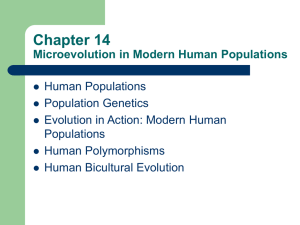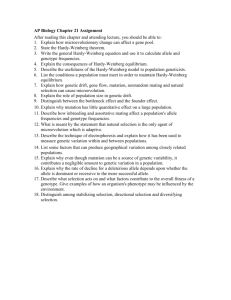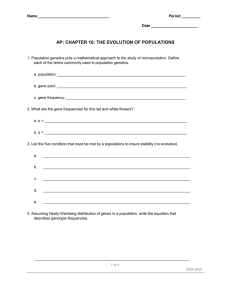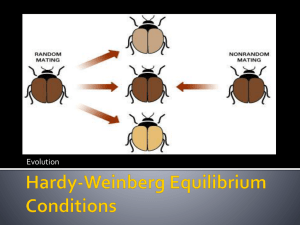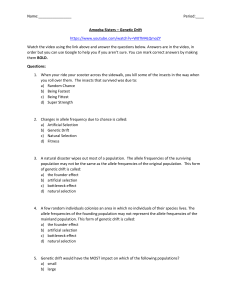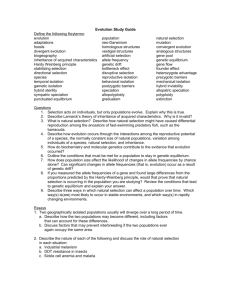Chapter 24 - Population Genetics
advertisement
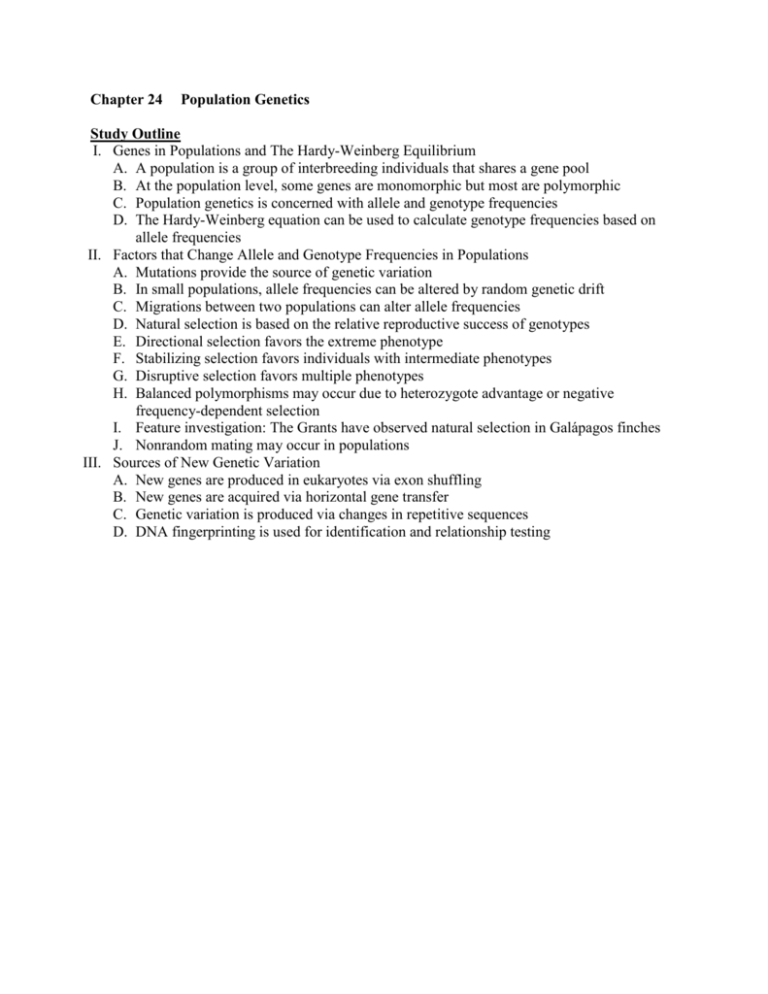
Chapter 24 Population Genetics Study Outline I. Genes in Populations and The Hardy-Weinberg Equilibrium A. A population is a group of interbreeding individuals that shares a gene pool B. At the population level, some genes are monomorphic but most are polymorphic C. Population genetics is concerned with allele and genotype frequencies D. The Hardy-Weinberg equation can be used to calculate genotype frequencies based on allele frequencies II. Factors that Change Allele and Genotype Frequencies in Populations A. Mutations provide the source of genetic variation B. In small populations, allele frequencies can be altered by random genetic drift C. Migrations between two populations can alter allele frequencies D. Natural selection is based on the relative reproductive success of genotypes E. Directional selection favors the extreme phenotype F. Stabilizing selection favors individuals with intermediate phenotypes G. Disruptive selection favors multiple phenotypes H. Balanced polymorphisms may occur due to heterozygote advantage or negative frequency-dependent selection I. Feature investigation: The Grants have observed natural selection in Galápagos finches J. Nonrandom mating may occur in populations III. Sources of New Genetic Variation A. New genes are produced in eukaryotes via exon shuffling B. New genes are acquired via horizontal gene transfer C. Genetic variation is produced via changes in repetitive sequences D. DNA fingerprinting is used for identification and relationship testing

